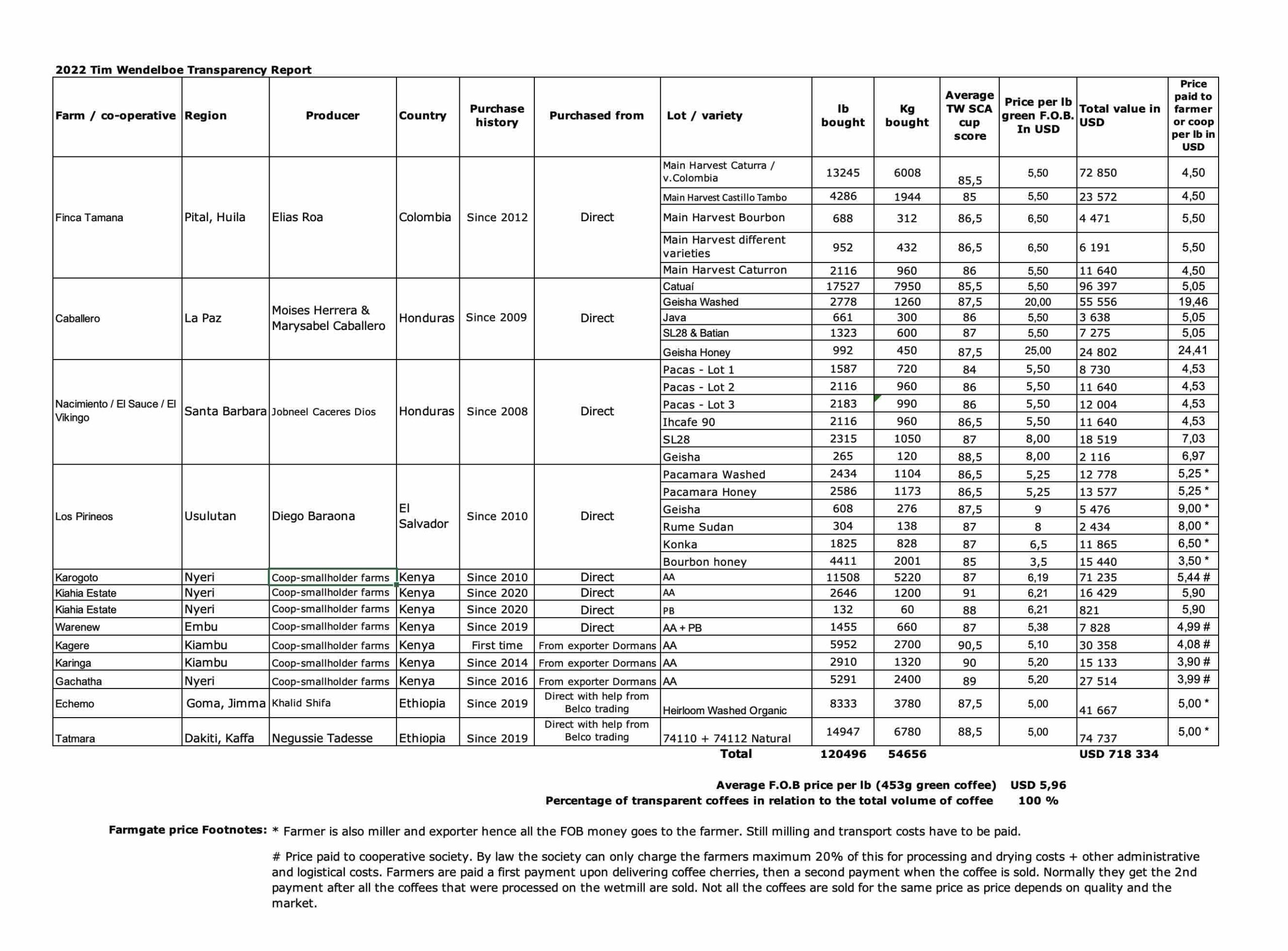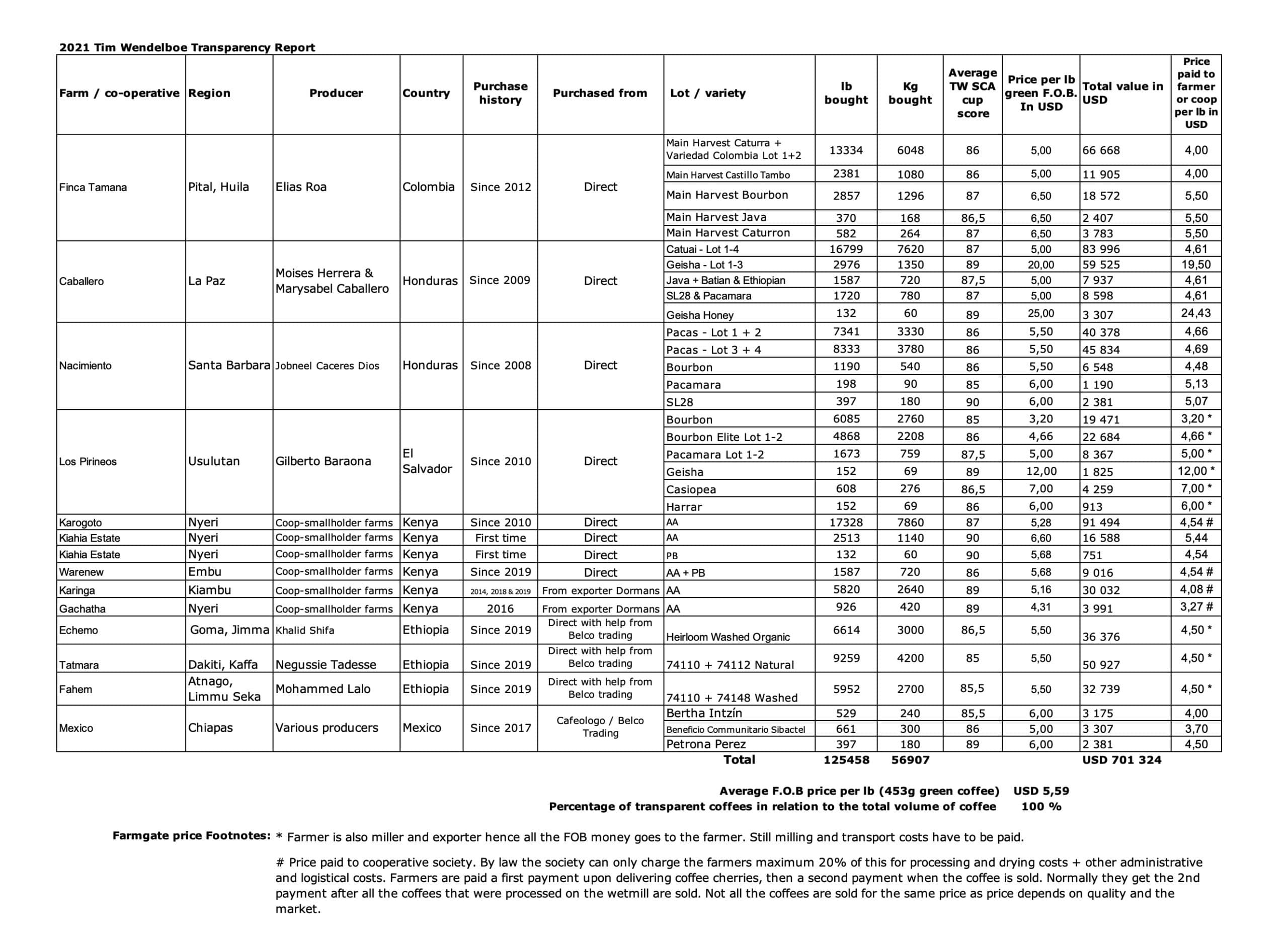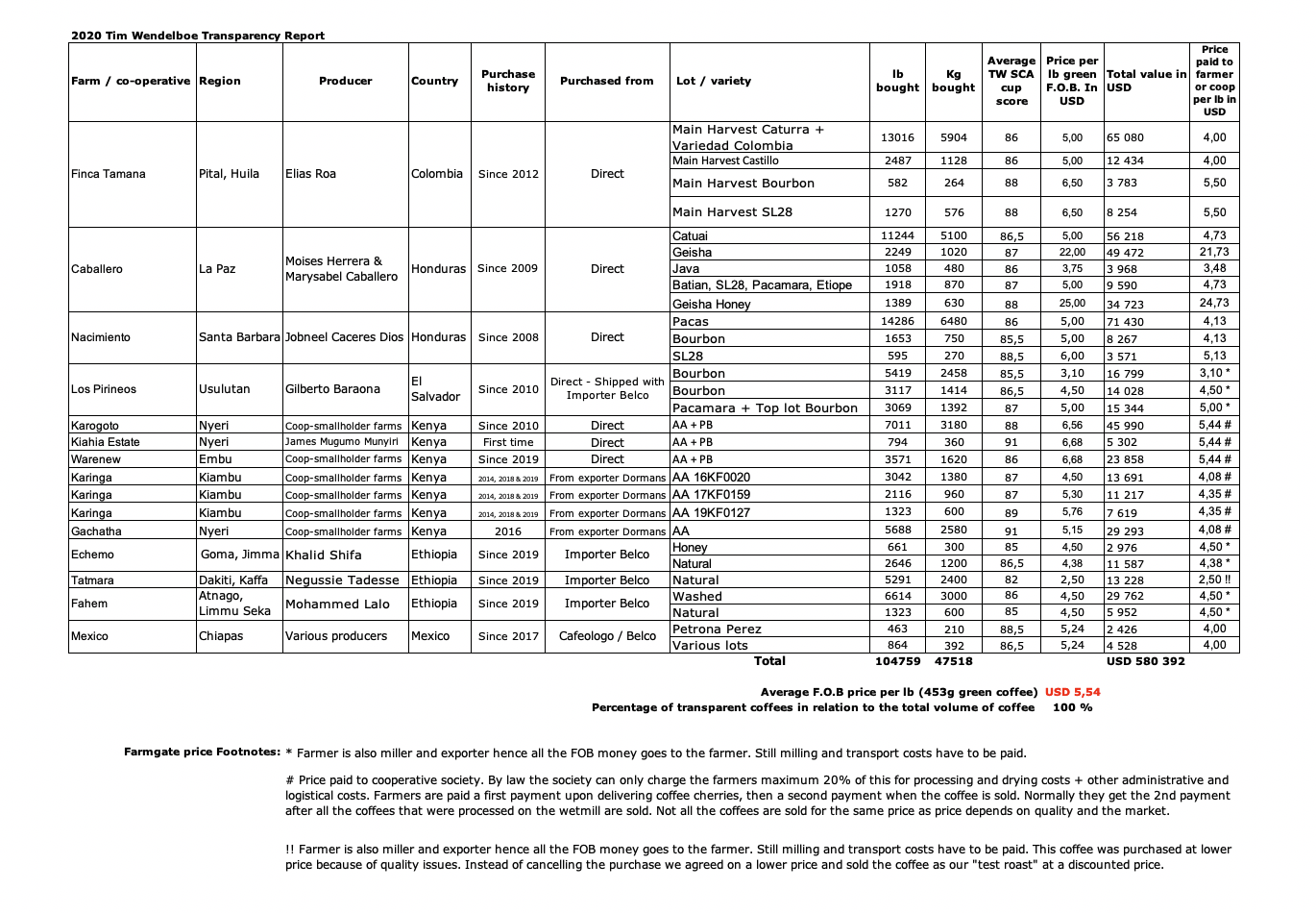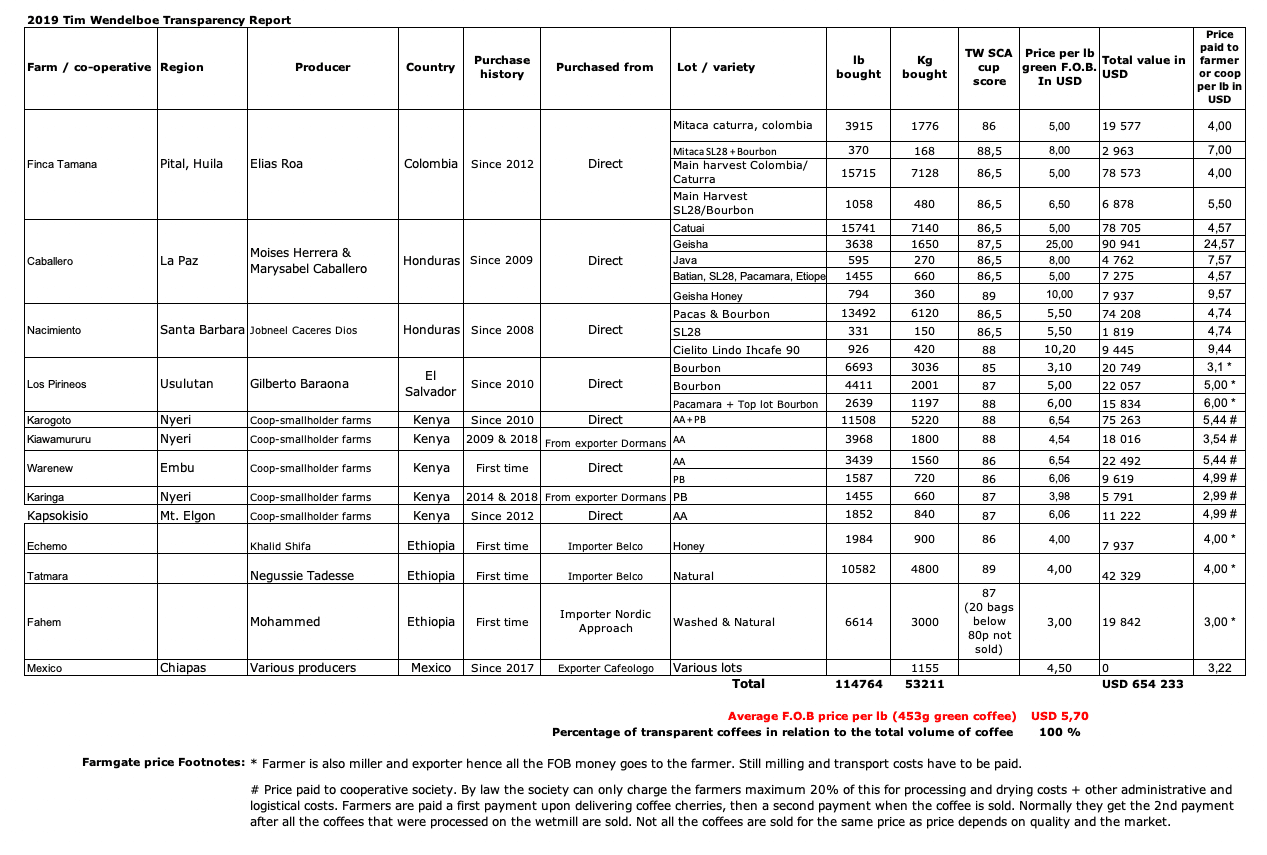Coffee is cheap, part 2
I would like to follow up on the previous post where I wrote that coffee is too cheap. As stated, I think the reason why people still think coffee is too expensive is because of a lack of knowledge. Therefore I will try to give a small insight to how the trade works for us in Colombia. The coffee trade is extremely complex, and it is traded in very different models not only from roaster to roaster, but also in the different origin countries. I truly believe that a transparent model is the best solution to making the consumers more aware and conscious of what they are buying and paying for. Lazy solutions like certifications and labeling as a trade model for roasters, is not something we do at Tim Wendelboe. The reason is that I think as long as the product is good, the price is fair and the trade model is transparent, there is no need for selling the product as a “fair trade” or as a “direct trade” product. We are in the coffee business, coffee is something we drink, hence we sell coffee for it’s taste. Some have commented from the last post that the problem is not the coffee price itself, but the lack of transparency and the “greedy” middle men. To that I have to say that without middle men, we would not be able to sell coffee in Norway or any other non-coffee producing countries. The coffee price to the farmer is too low; there is absolutely no doubt about that. Yes, there are a lot of companies that pay a very good price for coffee, but not all farmers have regular customers who are willing to pay top dollar for the coffee. The reality is that the majority of farmers don’t.  To get coffee to Norway we need to pay for a lot of services. These services are in many cases described as the “middle men” but are all a crucial part of getting the coffee to Norway. Let’s take a look at the price we payed for the coffee at Finca Tamana in June: We payed USD 3.76 per lb of green coffee F.O.B. (Free on board, which means the coffee is delivered to the ship in Colombia for USD 3.76 per lb) Out of this price, Elias (the farmer) ended up with a total of USD 2.73 per lb. The $1,03 difference covered the following costs:
To get coffee to Norway we need to pay for a lot of services. These services are in many cases described as the “middle men” but are all a crucial part of getting the coffee to Norway. Let’s take a look at the price we payed for the coffee at Finca Tamana in June: We payed USD 3.76 per lb of green coffee F.O.B. (Free on board, which means the coffee is delivered to the ship in Colombia for USD 3.76 per lb) Out of this price, Elias (the farmer) ended up with a total of USD 2.73 per lb. The $1,03 difference covered the following costs:
- 45 cents went to the exporter, in this case Mr. Alejandro Renjifo and Fairfield Trading. In Colombia, due to certain problems with other produce in Colombia, the exporter of the coffee needs to have an export license. Farmers do not have this, so they can use any exporter they prefer, but normally it is chosen by the buyer. Out of the 45 cents, Alejandro has to pay for shipping of samples, export documentation, transport of coffee to the dry mill, transport from the mill to the ship, interest on the pre-financing of the coffee, etc. In addition, Alejandro needs to make a living, pay employees, pay rent on his offices, etc.
- Coocentral (the cooperative Elias has chosen to work with in Huila) charged 7 cents for pre-financing his coffee (paying Elias the market price for the coffee upon delivery) storage, and quality control. They also provide agronomic assistance, sample preparation, and help Elias with issues he might have.
- The dry-milling costs 40 cents per lb. The parchment, sticks and stones need to be removed from the coffee. Then, the coffee is sorted on screen size, density and all physical defects are removed by electronic sorting machines. The coffee is then packed in Grain-pro and jute bags to be ready for export.
- We also had to pay an additional 11 cents for grain-pro bags as this is not standard. Grain-pro bags are an inner plastic bag layer, which further protects the coffee in shipment and storage.
I am not claiming that this is a fantastic price for the coffee. I would like to pay more, but we also need to be able to sell the coffee, and we are already pushing the boundaries of what our customers are willing to pay for coffee. Especially our whole sale clients. Still, it is a much better price compared to the market price which today is about USD 1.70 per. lb. F.O.B. for Colombian coffee. The milling cost and export costs are about the same, so Elias ends up with a lot more money, even if he has to pay more to the pickers, etc. 
At our end, we need to pay for the shipping of the container, insurance, transport on land to our warehouse, off-loading of the container, rent of warehousing, roasting, testing, rent for our space, salaries for the employees, electricity, gas, packaging, equipment, travel to origin, etc, etc.
I believe everyone in the trade is entitled to a decent pay and, at the very least, covering the costs and making a fair profit. Historically, and also today, most of the companies that handle the coffee after it leaves the hands of the farmer are making money, and I don’t think that there is anything wrong with that. After all that is what business is about.
What I do have a problem with is that the most important part of the chain, the farmer, has the highest risk (no control over coffee prices, exchange rates and the weather) and is the only one who is not making a healthy profit.
We need to change that!
We believe the best way to do so, is to demand transparency and pay more for quality coffee!




